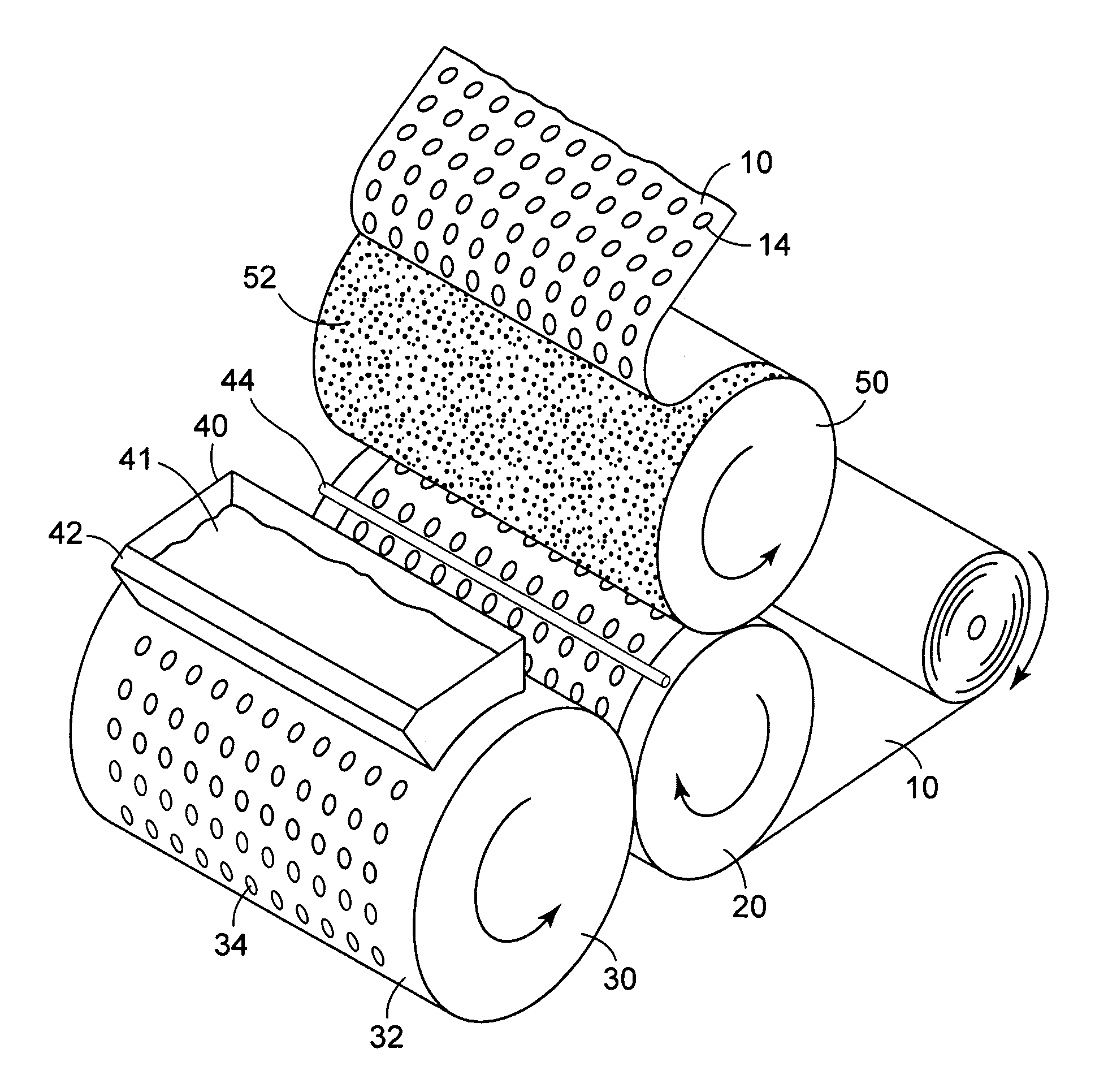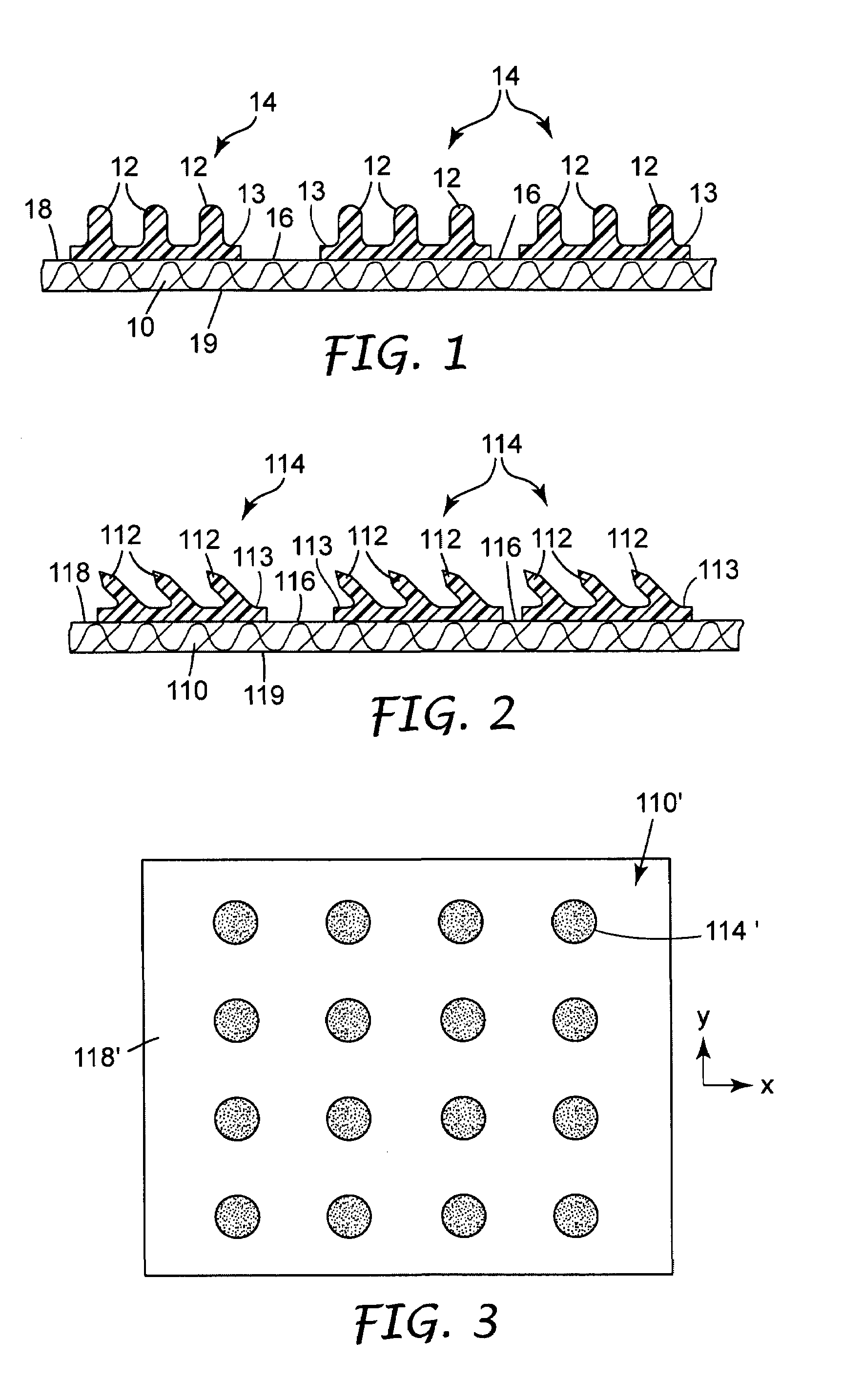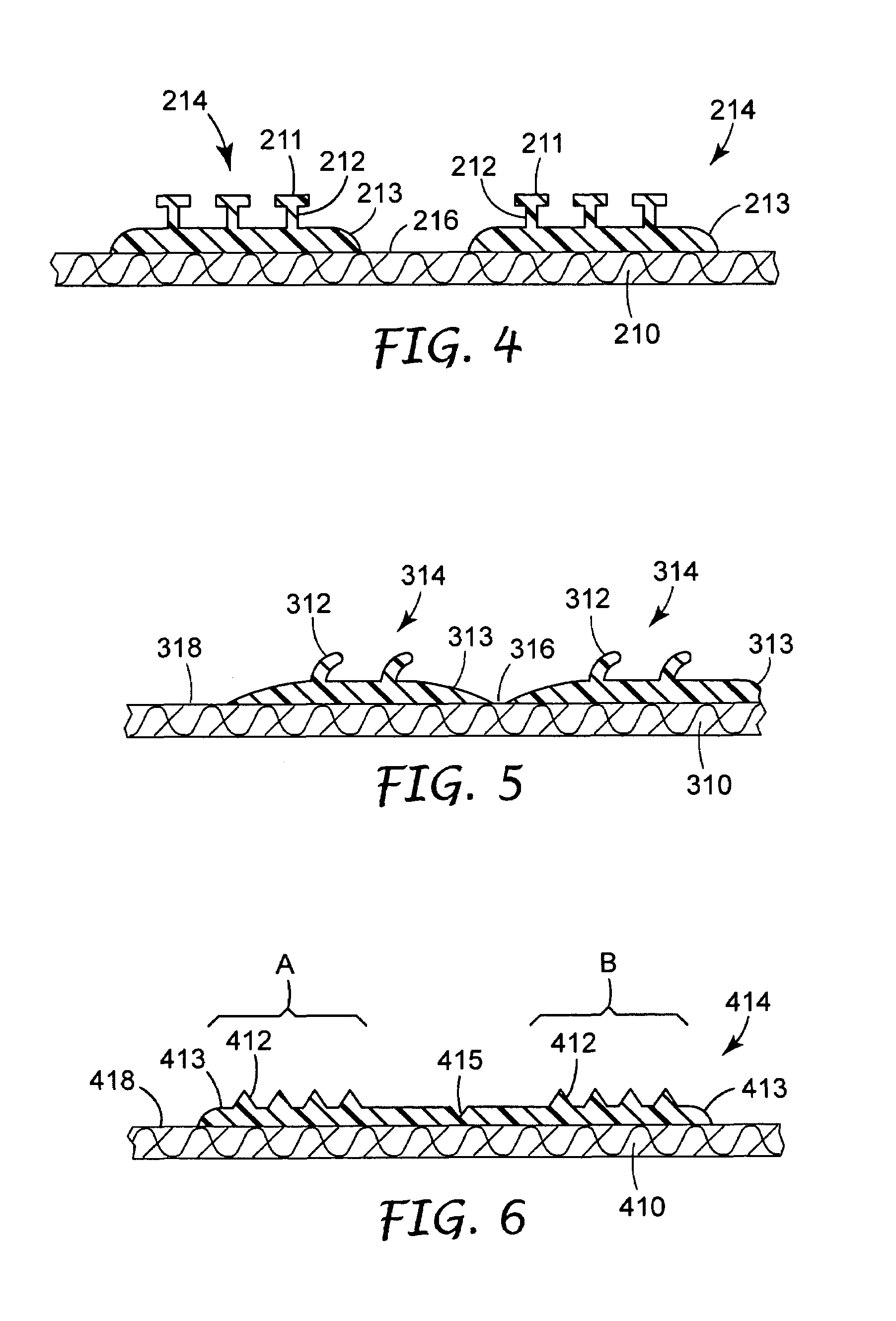Systems and methods for composite webs with structured discrete polymeric regions
a polymeric region and composite web technology, applied in the field of systems and methods for manufacturing composite webs, can solve the problems of reducing throughput, affecting the shape and size of the polymeric region, and attaching discrete pieces, so as to achieve substantial control over the shape and size of the polymeric region, and control the shape, spacing and volume of the discrete polymeric region
- Summary
- Abstract
- Description
- Claims
- Application Information
AI Technical Summary
Benefits of technology
Problems solved by technology
Method used
Image
Examples
example 1
[0130]A web of the present invention was produced using apparatus similar to that shown in FIG. 8. A 5 cm diameter single screw extruder was used to deliver molten ultra low density polyethylene (ENGAGE 8402, 30 MI, DupontDow Elastomers), pigmented with 1.5% of a yellow polyolefin-based color concentrate, at a melt temperature of approximately 273° C. to a strand die 40 having 5 orifices spaced 25 mm apart across the die tip. Each orifice was 2.0 mm in diameter. The strands of molten polymer were extruded vertically downward onto the exterior surface 32 of an oil-heated steel transfer roll 30 having a diameter of 23 cm. The exterior surface of the transfer roll was machined using a computer controlled milling machine to have truncated hemispherical depressions 2.3 mm in diameter and 1.3 mm in depth, having a volume of 2.2 mm3 and an area of 3.2 mm2 arranged in a staggered array with center-to-center spacing between depressions of 5.1 mm resulting in 3.9 depressions / cm2 across the ex...
example 2
[0135]To demonstrate the use of a transfer roll having larger sized depressions, a web was prepared as in Example 1 except the exterior surface of the transfer roll was machined using a computer controlled milling machine to have elongated hemispherical depressions 2.3 mm in diameter and 2.3 mm in depth, having a volume of 6.6 mm3 and an area of 3.2 mm2 arranged in a staggered array with center-to-center spacing between depressions of 5.1 mm resulting in 3.9 depressions / cm2 across the exterior surface of the transfer roll. The basis weight of each transferred molten polymer region was 102 grams / m2. The cumulative basis weight of the transferred polymer regions on the nonwoven substrate was 8.0 grams / m2. The temperature of the backup roll was approximately 121° C. and the temperature of the forming roll was approximately 38° C. The height of the stems produced by the forming roll, measured normal to the surface of the base polymer region, was 280 microns.
example 3
[0136]To demonstrate the use of a transfer roll having larger sized depressions, a web was prepared as in Example 1 except the exterior surface of the transfer roll was machined using a computer controlled milling machine to have elongated hemispherical depressions 2.5 mm in diameter and 2.5 mm in depth, having a volume of 12.9 mm3 and an area of 5.1 mm2 arranged in a staggered array with center-to-center spacing between depressions of 5.1 mm resulting in 3.9 depressions / cm2 across the exterior surface of the transfer roll. The basis weight of each transferred molten polymer region was 221 grams / m2. The cumulative basis weight of the transferred polymer regions on the nonwoven substrate was 28 grams / m2. The temperature of the backup roll was approximately 121° C. and the temperature of the forming roll was approximately 38° C. The height of the stems produced by the forming roll, measured normal to the surface of the base polymer region, was 381 microns.
PUM
| Property | Measurement | Unit |
|---|---|---|
| volume | aaaaa | aaaaa |
| area | aaaaa | aaaaa |
| lengths | aaaaa | aaaaa |
Abstract
Description
Claims
Application Information
 Login to View More
Login to View More - R&D
- Intellectual Property
- Life Sciences
- Materials
- Tech Scout
- Unparalleled Data Quality
- Higher Quality Content
- 60% Fewer Hallucinations
Browse by: Latest US Patents, China's latest patents, Technical Efficacy Thesaurus, Application Domain, Technology Topic, Popular Technical Reports.
© 2025 PatSnap. All rights reserved.Legal|Privacy policy|Modern Slavery Act Transparency Statement|Sitemap|About US| Contact US: help@patsnap.com



